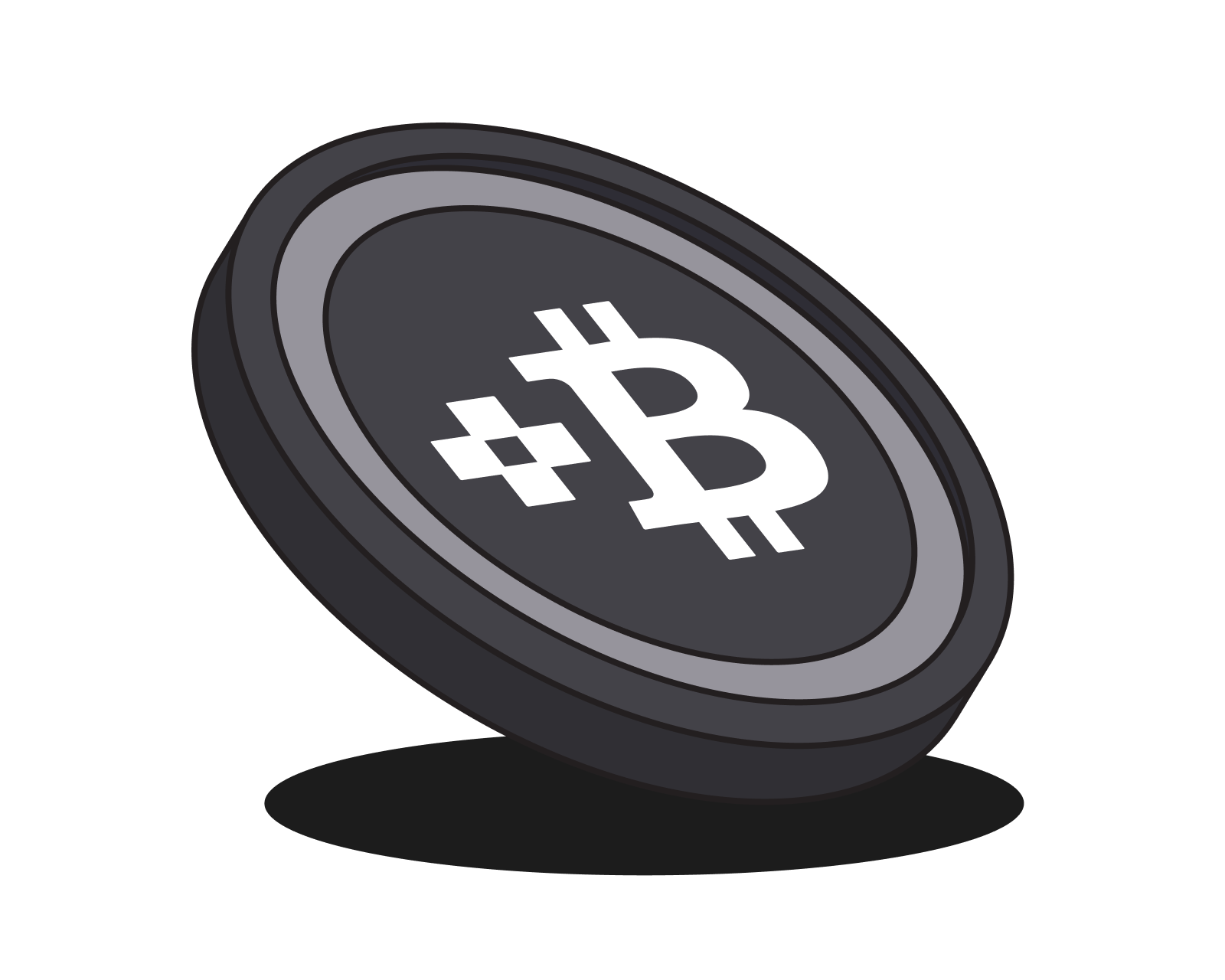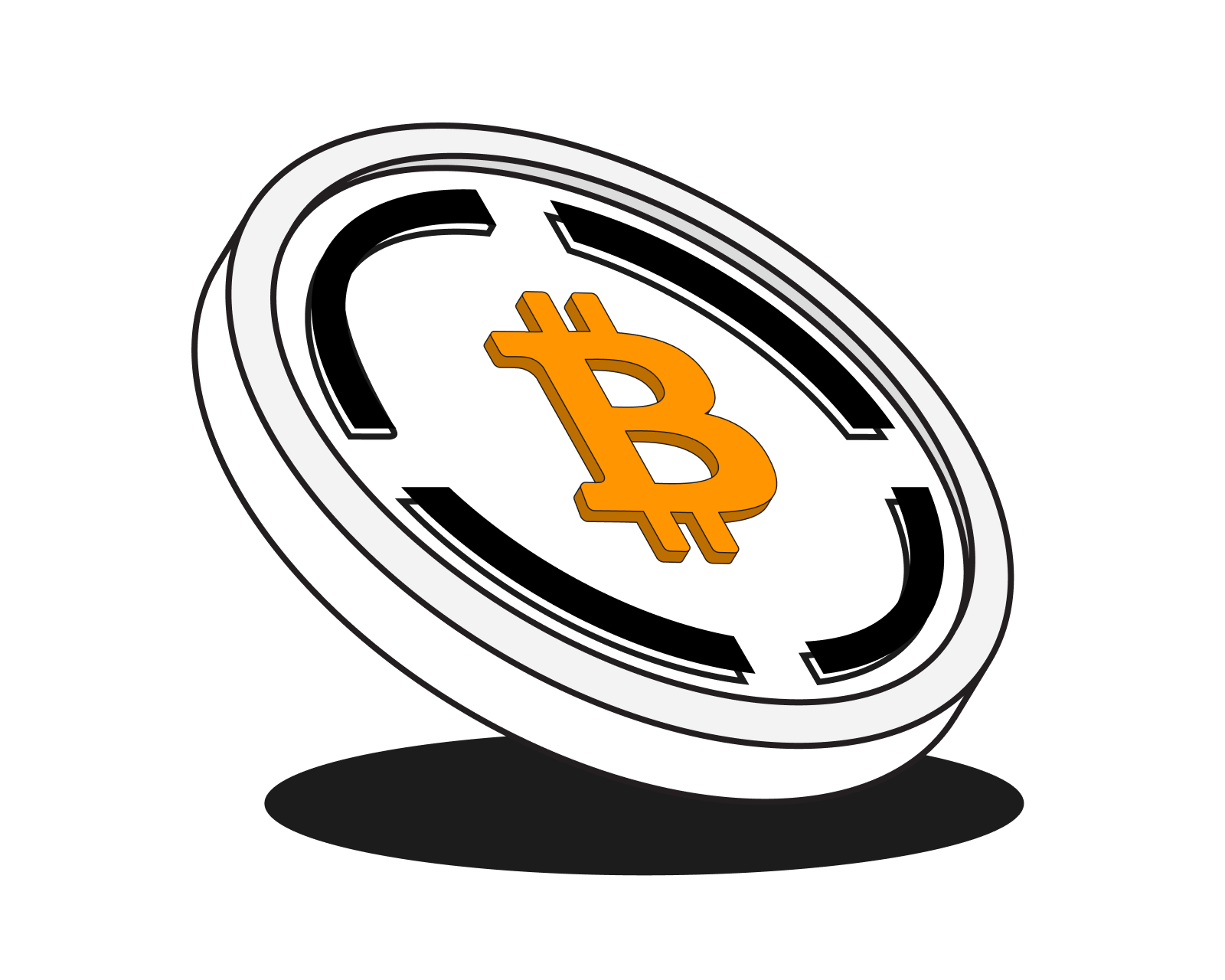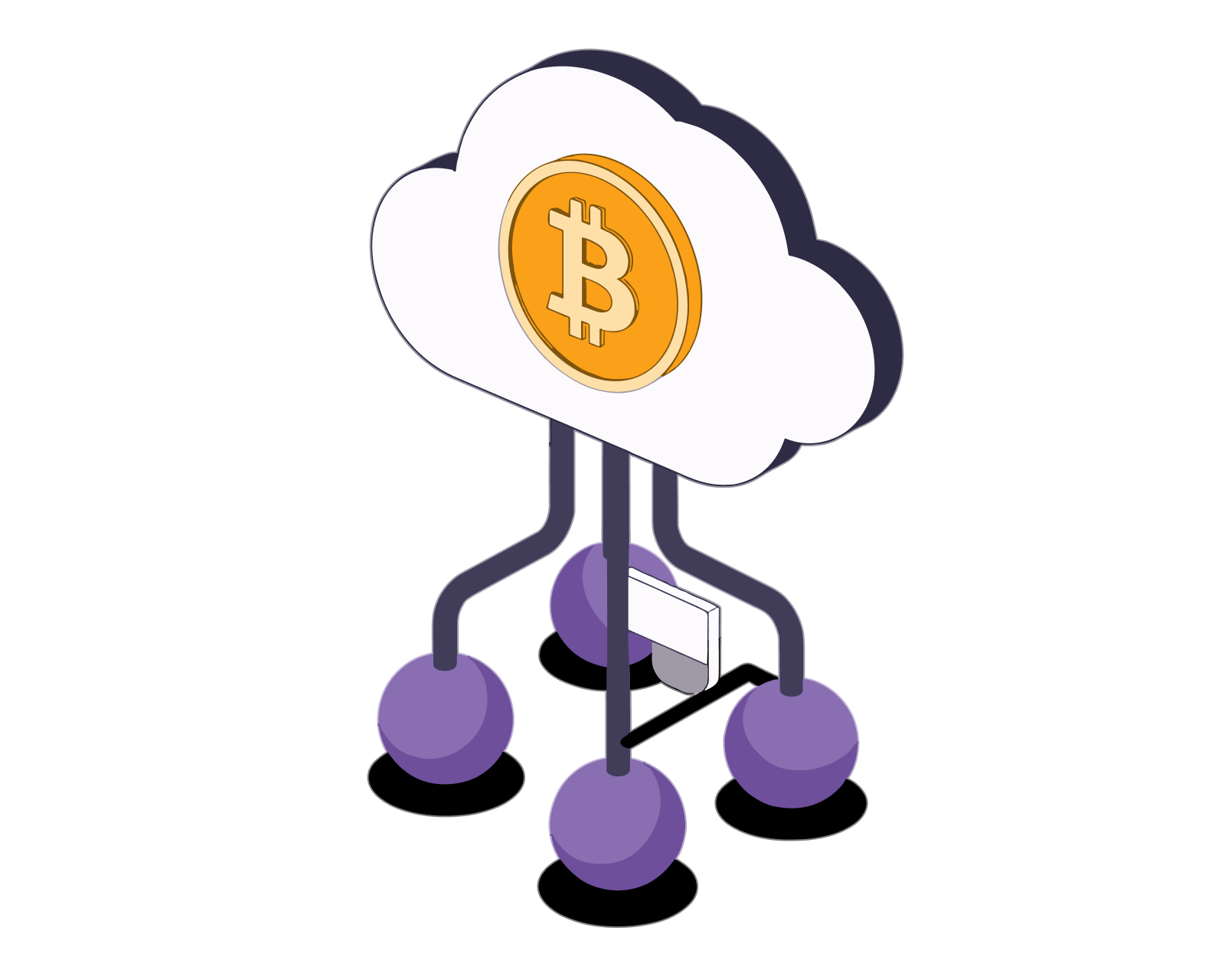What is tBTC (Threshold Bitcoin)?

Table of Contents
What is tBTC?
tBTC is a decentralized Bitcoin-to-Ethereum bridge that enables Bitcoin holders to access the DeFi ecosystem without relying on centralized entities to custody their BTC.
tBTC is backed 1:1 with Bitcoin, meaning that for every 1 tBTC minted, there is 1 Bitcoin secured by the Threshold Network. The bridge is fully transparent and provides up-to-date proof of reserves.
Get started with a Bitcoin introduction and learn more in What is Bitcoin?. Diver deeper and learn about how Bitcoin transactions work and discover Bitcoin's origin story-from an idea to a global financial revolution.
Why is tBTC needed?
Bitcoin is the most well-known and valuable cryptocurrency, but its blockchain lacks the smart-contract functionality needed to participate in the DeFi ecosystem. Ethereum, on the other hand, is the leading platform for DeFi, with a wide range of dApps and protocols that enable lending BTC, borrowing BTC, trading BTC, and more.
tBTC bridges the gap between these two blockchains by allowing Bitcoin holders to bring their BTC to Ethereum in a decentralized and secure manner. This opens up a world of possibilities for Bitcoin holders.
Learn more about decentralized finance (Defi) and decentralized applications (dApps)
How to use tBTC
The current use cases for tBTC include:
Trade BTC on Ethereum-based DEXs: tBTC can be swapped on decentralized exchanges (DEXs) like Bitcoin.com's Verse DEX, Curve, Uniswap, and SushiSwap, providing Bitcoin holders with access to a wider range of trading pairs and liquidity.
Use BTC as collateral in DeFi lending protocols: tBTC can be used as collateral to borrow other cryptocurrencies or mint stablecoins, enabling Bitcoin holders to leverage their BTC holdings without selling them. tBTC has been integrated with platforms like AAVE and Compound, further enhancing its utility in DeFi by offering more borrowing and lending options. This capability extends to thUSD, a decentralized stablecoin created by Threshold Network and backed by tBTC and ETH, enabling interest-free borrowing. tBTC can also be used as collateral to mint a wide array of stablecoins. These protocols open up new ways for Bitcoin holders to access liquidity and participate in decentralized finance without losing self-sovereignty. Learn more about Bitcoin liquidity and stablecoins.
Participate in yield farming and other DeFi strategies: tBTC can be deposited into liquidity pools or staked in DeFi protocols to earn rewards, allowing Bitcoin holders to generate passive income from their BTC. Learn more about yield farming and how to use tBTC.
How does tBTC work?
tBTC uses a decentralized network of nodes to create and redeem tBTC. These nodes are chosen randomly from a pool of participants who have staked Threshold (T) tokens, which is the native token of the Threshold Network. The Threshold Network is a decentralized protocol combining cryptographic and privacy-preserving technologies from Keep and NuCypher to enable secure, trust-minimized applications like tBTC on Ethereum and numerous other blockchains.
Here's a simplified overview of the tBTC minting and redemption process:
How to Mint tBTC
Request Address: User interacts with the dashboard to create a one-time use BTC deposit address by providing their ETH address and a BTC recovery address. This address is unique to this user.
BTC Deposit: User makes bitcoin deposit (> 0.01 BTC).
Mint tBTC: The bridge will detect the deposit and the user initiates the mint on the dashboard.
Receive tBTC: User receives tBTC on the ETH address provided in step 1.
How to Redeem tBTC
Return tBTC: User connects ETH wallet holding tBTC to dashboard
Request Unminting: User enters amount of tBTC to be redeemed
Receive Bitcoin: User provides BTC address and requests unminting
Sweeping and BTC Wallets
Each Bitcoin deposit creates a specific transaction output (UTXO). The protocol automatically consolidates these outputs every few hours through a process called sweeping. This keeps the wallet organized and efficient. Sweeping occurs automatically.
The tBTC bridge creates a new BTC wallet roughly every two weeks, or once 100 BTC have been deposited. Wallets are secured by nodes on the Threshold Network. No node operator has unilateral access to the keys and BTC can only be moved by a threshold majority (51 of 100 signers). Signers are chosen randomly during the wallet creation process, called a distributed key generation (DKG) event. Selection randomness is generated by an application called the random beacon, creating a verifiable source of randomness.
Proof of Reserves/Funds
A list of Bitcoin wallets and their balances can be found on Threshold Network's tBTC scan page here.
What are the benefits of tBTC?
tBTC offers several benefits over other methods of bringing Bitcoin to Ethereum, such as WBTC:
Decentralization: tBTC is decentralized, meaning that no single entity is custodying the BTC collateral, or controlling the minting or redemption process. This reduces the risk of censorship or manipulation and replaces the need to trust fallible entities with the ability to trust code audited by reputable firms. Learn more about Bitcoin governance.
Permissionless: Anyone can mint and redeem tBTC; no merchants as middlemen, such as with tBTC.
Security: tBTC is secured by the Threshold Network, which uses threshold cryptography to ensure the security of the multi-signature addresses where BTC is held. Threshold encourages ongoing scrutiny of the protocol through a $500k bug bounty program with Immunefi. Learn more about digital asset security.
Transparency: All tBTC transactions and operations are publicly verifiable on the Ethereum and Bitcoin blockchains. Threshold offers a tBTC explorer to conveniently bring all of the cross-chain data together in one place.
What are the risks of using tBTC?
While tBTC implements extensive security measures, users should be aware of these potential risks:
Smart Contract Risk: The tBTC protocol relies on smart contracts, which can be vulnerable to bugs or exploits.
Collusion Risk: The tBTC node operators on the Threshold Network are responsible for the security of the BTC held in numerous verifiable multi-signature addresses. If a majority of signers for a particular wallet were to collude or were compromised, it could lead to the loss of funds in the compromised multi-signature address.
Market Risk: While tBTC is always backed 1:1 by Bitcoin, its value inherits Bitcoin's price volatility.
How to get tBTC
tBTC can be minted with BTC on the threshold.network dashboard. As an ERC-20 token on Ethereum, tBTC can be swapped on a variety of centralized and decentralized exchanges, including Bitcoin.com's decentralized exchange Verse DEX, and the Bitcoin.com Wallet app.
You can also earn tBTC by staking Bitcoin.com's ecosystem token VERSE on Verse DEX or in the Bitcoin.com Wallet app. Learn more about how to earn tBTC here.
tBTC vs. WBTC: A Comparison
Both tBTC and WBTC are tokenized versions of Bitcoin on the Ethereum blockchain, but they fundamentally differ in their underlying mechanisms and features. Here's a comparison:
1. Centralization vs Decentralization
tBTC: Fully decentralized. It utilizes a network of independent nodes who have staked T tokens from the Threshold Network. These nodes manage the Bitcoin that backs tBTC, ensuring that no single entity or central authority has control over deposited BTC.
WBTC: Centralized. WBTC is issued by a consortium of “approved merchants” led by BitGo, a centralized custodian that holds the actual Bitcoin. Because WBTC is issued by a consortium, any failure on the part of custodians, issuers, or involved parties could impact WBTC’s backing and holders’ ability to redeem it 1:1 for Bitcoin.
2. Custody
tBTC: Decentralized-custody. The Bitcoin backing tBTC is managed by decentralized nodes using a multi-signature setup, ensuring that no centralized entity has custody or control over the Bitcoin.
WBTC: Custodial. WBTC is centrally managed, with BitGo and BiT Global serving as the custodians. This means holders rely on just two entities for custody, exposing them to risks if either entity faces any operational, security, or legal issues.
3. Trust Model
tBTC: Trust-minimized. No single entity has control over the Bitcoin backing tBTC, as it relies on threshold cryptography and decentralized protocol operations.
WBTC: Centralized trust. Users need to trust the WBTC custodians, BitGo and BiT Global, to securely hold the Bitcoin, authorize and manage its merchants and properly manage token minting and redemption.
4. Transparency
tBTC: Highly transparent and verifiable on-chain. The protocol is open-source, and all transactions related to tBTC minting, redemption, and custody are visible on-chain.
WBTC: Transparent but custodial. BitGo publishes proof of reserves, and WBTC’s supply is verifiable on-chain, but users rely on BitGo's transparency.
5. Minting Process
tBTC: Permissionless. Anyone can mint tBTC by locking Bitcoin in the decentralized protocol. The minting process is managed by smart contracts and a decentralized set of nodes on the Threshold Network.
WBTC: Permissioned. Only approved merchants can mint WBTC. Users must go through one of these whitelisted merchants to mint WBTC.
6. Redemption
tBTC: Permissionless. Redemption is permissionless and facilitated by decentralized nodes who release the Bitcoin back to the original owner upon burning tBTC.
WBTC: Permissioned. Redemption of WBTC for Bitcoin is handled by BitGo and its approved merchants. Users must rely on these trusted entities to perform the necessary actions to receive their BTC back.
7. Speed and Cost
While both tBTC and WBTC live on the Ethereum blockchain and share similar transaction speeds and costs, the minting process is different. tBTC typically takes 1-3 hours to mint due to its decentralized, trustless nature, involving multiple nodes and multi-signature setups. In contrast, WBTC takes around 24 hours because it relies on a centralized custodian to verify and mint, adding time for the approval process. This makes tBTC more efficient for users seeking faster minting in a decentralized manner.
8. Use Cases
Since both tBTC and WBTC are ERC-20 tokens, they can be used in the same way on Ethereum and EVM chains. This means they can both be traded for other tokens on Ethereum-based decentralized exchanges. Likewise both can be used as collateral in DeFi lending protocols, enabling holders to leverage their Bitcoin holdings without selling them. Finally, both tBTC and WBTC can be deposited into liquidity pools or staked in DeFi protocols to earn rewards. This enables Bitcoin holders to generate yield.
While both tBTC and WBTC can be used as collateral in DeFi lending protocols and for earning yield in liquidity pools, WBTC carries the risk of centralization. WBTC relies on a centralized custodian, meaning users must trust a third party to hold the Bitcoin backing WBTC. This introduces potential risks like censorship, counterparty failures, or even asset freezing in some centralized models. In contrast, tBTC mitigates these risks by using a trustless, decentralized protocol to manage Bitcoin, eliminating the need for a single custodian.
9. Governance
tBTC: Governance for tBTC is overseen by the Threshold DAO, a truly decentralized autonomous organization. The Threshold DAO empowers T token holders to actively participate in decisions regarding the protocol’s future, including updates, new integrations, and security enhancements. This robust, community-driven governance model ensures that tBTC evolves in alignment with the interests of its decentralized community, making it resilient and adaptable to the needs of the DeFi ecosystem.
WBTC: In contrast, governance of WBTC is formally attributed to the WBTC DAO. However, despite the DAO structure, WBTC’s actual custody and minting processes are controlled by just a few entities. This centralized model means that WBTC holders are dependent on BitGo and other custodial entities for the safekeeping and issuance of WBTC, which limits community input and transparency.
Summary
In summary, tBTC stands as a decentralized, trust-minimized, and permissionless alternative to WBTC. Both assets enable Bitcoin’s participation in the DeFi ecosystem, but they fundamentally differ in approach and underlying principles. While WBTC relies on centralized custodians and approved merchants to hold and manage Bitcoin reserves, tBTC takes a decentralized path, leveraging the Threshold Network to secure Bitcoin without relying on any single entity.
tBTC provides Bitcoin holders with a way to engage in DeFi without compromising on the values of decentralization, transparency, and security that align with Bitcoin’s original ethos. By using threshold cryptography, tBTC distributes custody among a decentralized network of Threshold tBTC nodes, ensuring that no central authority controls the minting, redemption, or custody of Bitcoin backing tBTC. With tBTC, Bitcoin holders can interact across various DeFi ecosystems for trading, lending, borrowing, Bitcoin L2s, minting stablecoins, and Bitcoin staking. Each of these activities becomes more secure and trust-minimized, empowering users to leverage Bitcoin in new ways while avoiding the risks of centralization seen in custodial products.
Ultimately, tBTC aims to bring Bitcoin into DeFi without sacrificing the core principles of decentralization and user autonomy. It offers a pathway for users who prefer a fully transparent, permissionless system, removing the need for centralized custodians while opening a new world of opportunities in decentralized finance.
Learn about Bitcoin wallets and how to create one. Understand how to buy, send and receive Bitcoin. Also, explore Bitcoin's price history and Bitcoin price predictions.
Related guides
Start from here →
Wrapped Bitcoin Explained: Types, Benefits, and Risks
Wrapped Bitcoin lets you use Bitcoin on other blockchains. Learn about the different types and how they work.
Read this article →
Wrapped Bitcoin Explained: Types, Benefits, and Risks
Wrapped Bitcoin lets you use Bitcoin on other blockchains. Learn about the different types and how they work.

What is WBTC?
WBTC is an important part of the DeFi ecosystem. Learn what it is, and why it’s important.
Read this article →
What is WBTC?
WBTC is an important part of the DeFi ecosystem. Learn what it is, and why it’s important.

What are sidechains?
Learn about the different types of sidechains, their advantages and disadvantages, and what they're used for. Get the essentials on key sidechain projects.
Read this article →
What are sidechains?
Learn about the different types of sidechains, their advantages and disadvantages, and what they're used for. Get the essentials on key sidechain projects.

What are Bitcoin Layer-2 solutions?
Learn about Bitcoin Layer-2 solutions and how they may enable Bitcoin to scale.
Read this article →
What are Bitcoin Layer-2 solutions?
Learn about Bitcoin Layer-2 solutions and how they may enable Bitcoin to scale.


What is Ethereum?
Understand Ethereum's key characteristics.

What are ERC-20 tokens?
Learn the basics of the Ethereum token standard, what ERC-20 tokens are used for, and how they work.
Read this article →
What are ERC-20 tokens?
Learn the basics of the Ethereum token standard, what ERC-20 tokens are used for, and how they work.

What's a smart contract?
Get the basics on the "software" that runs on decentralized networks.
Read this article →
What's a smart contract?
Get the basics on the "software" that runs on decentralized networks.
STAY AHEAD IN CRYPTO
Stay ahead in crypto with our weekly newsletter delivering the insights that matter most
Weekly crypto news, curated for you
Actionable insights and educational tips
Updates on products fueling economic freedom
No spam. Unsubscribe anytime.



Start investing safely with the Bitcoin.com Wallet
Over wallets created so far
Everything you need to buy, sell, trade, and invest your Bitcoin and cryptocurrency securely

© 2025 Saint Bitts LLC Bitcoin.com. All rights reserved


